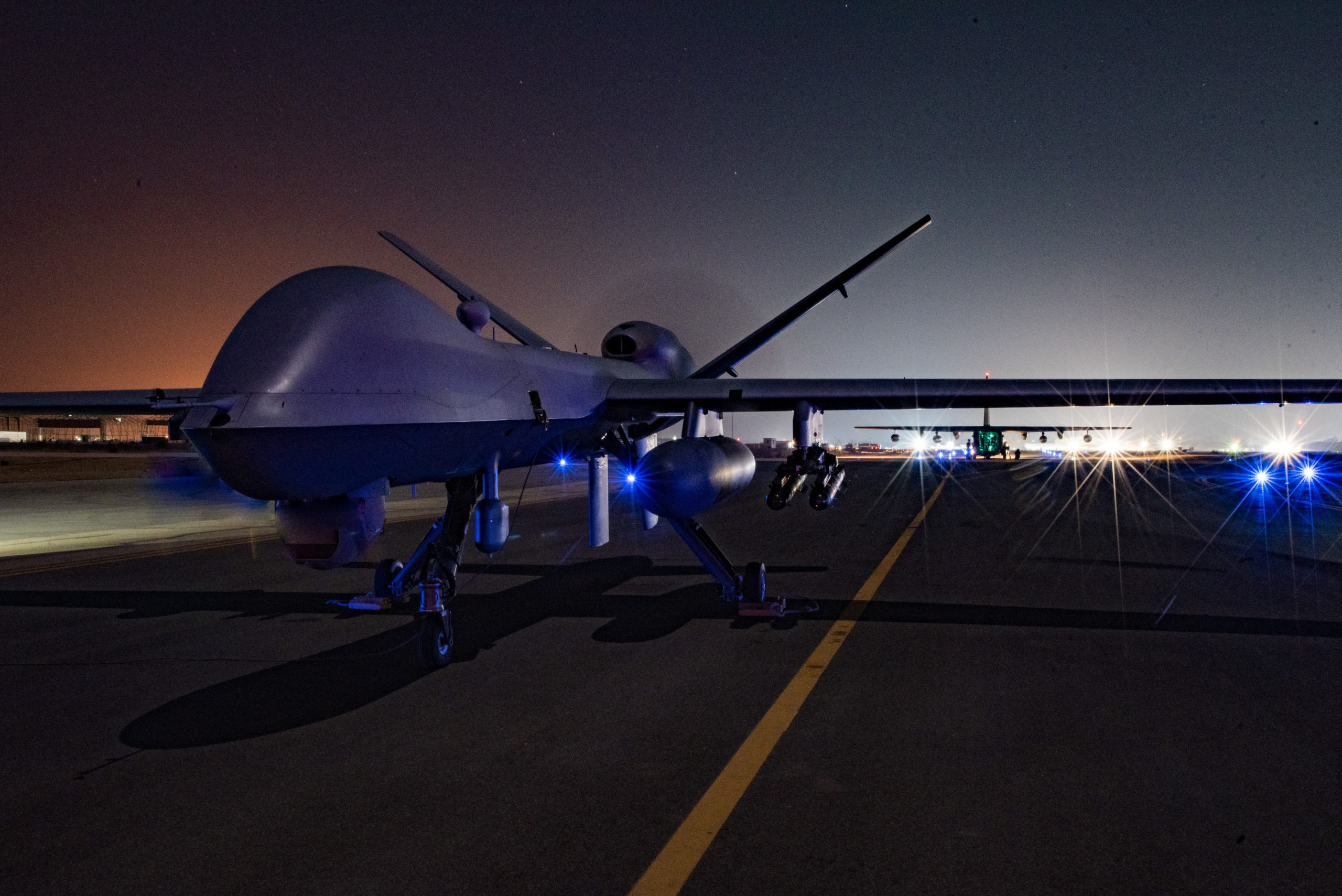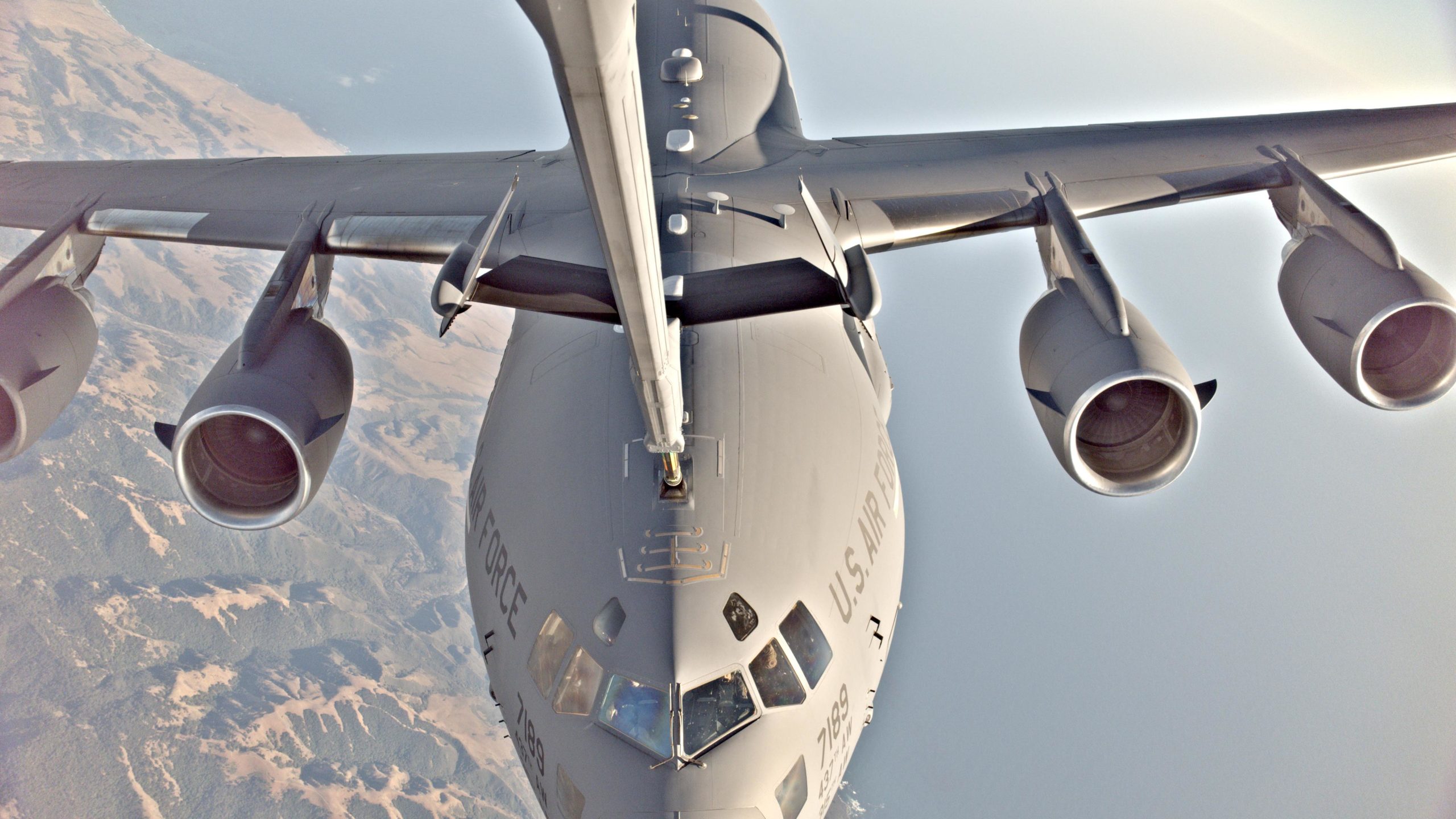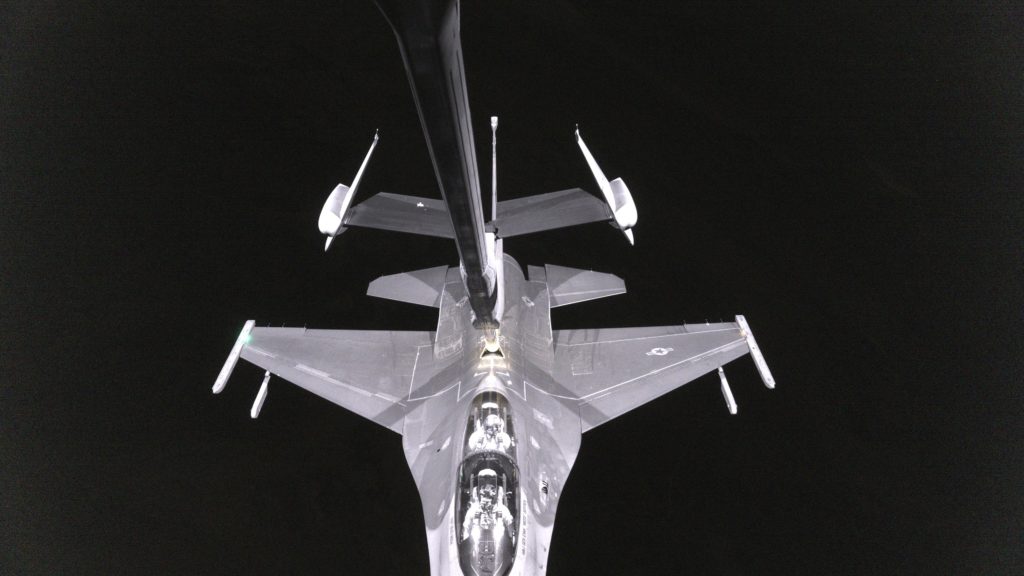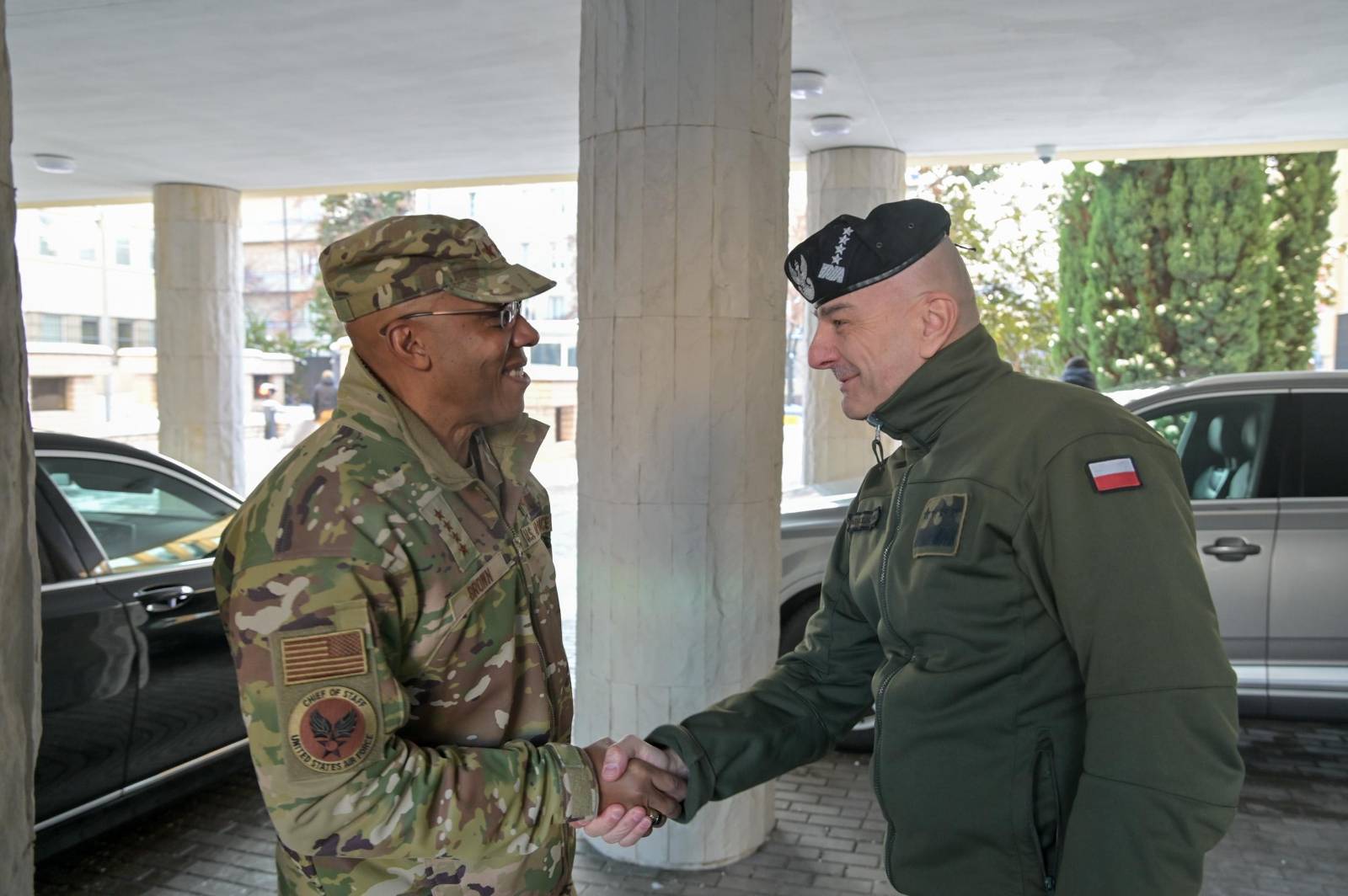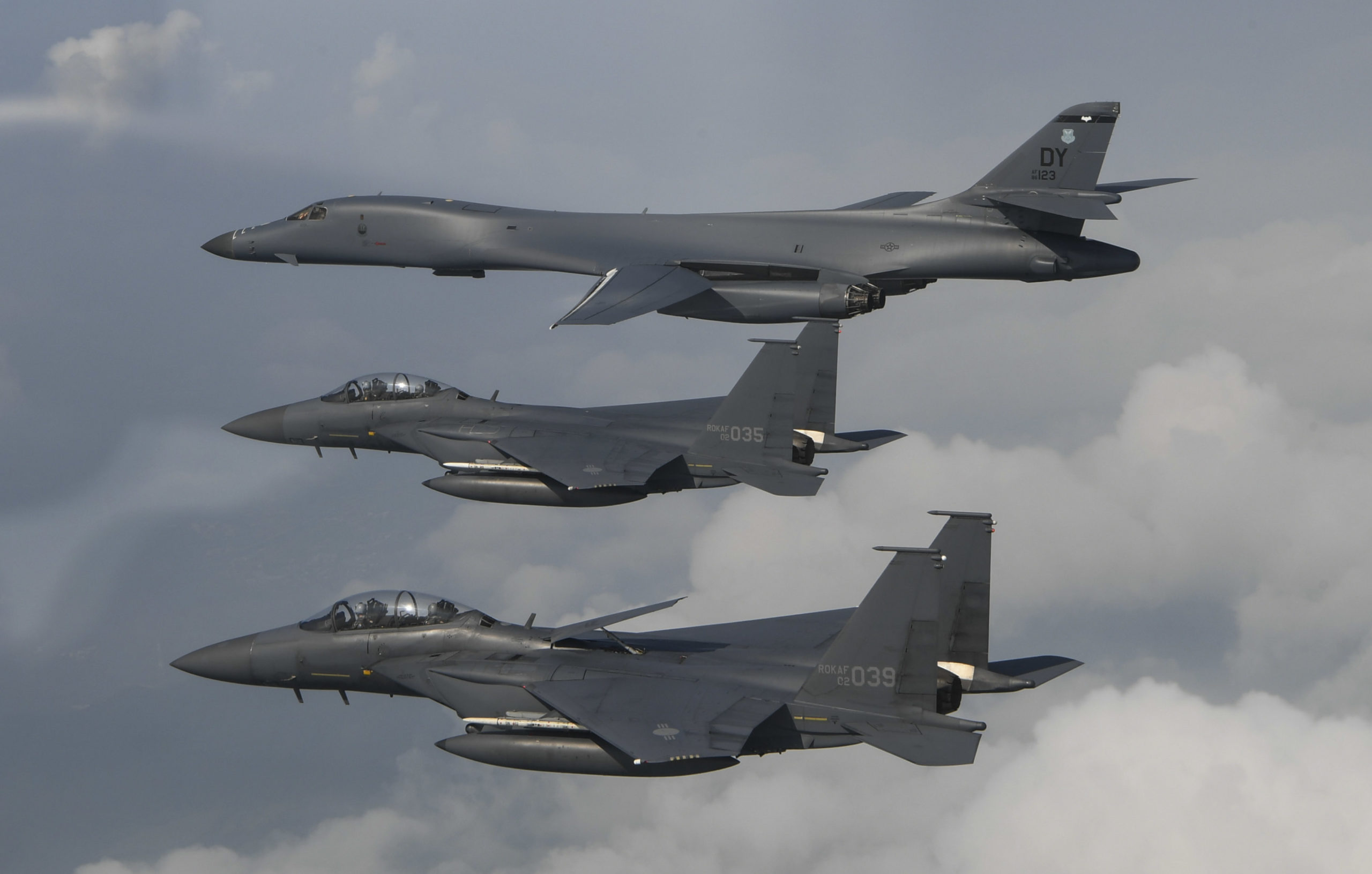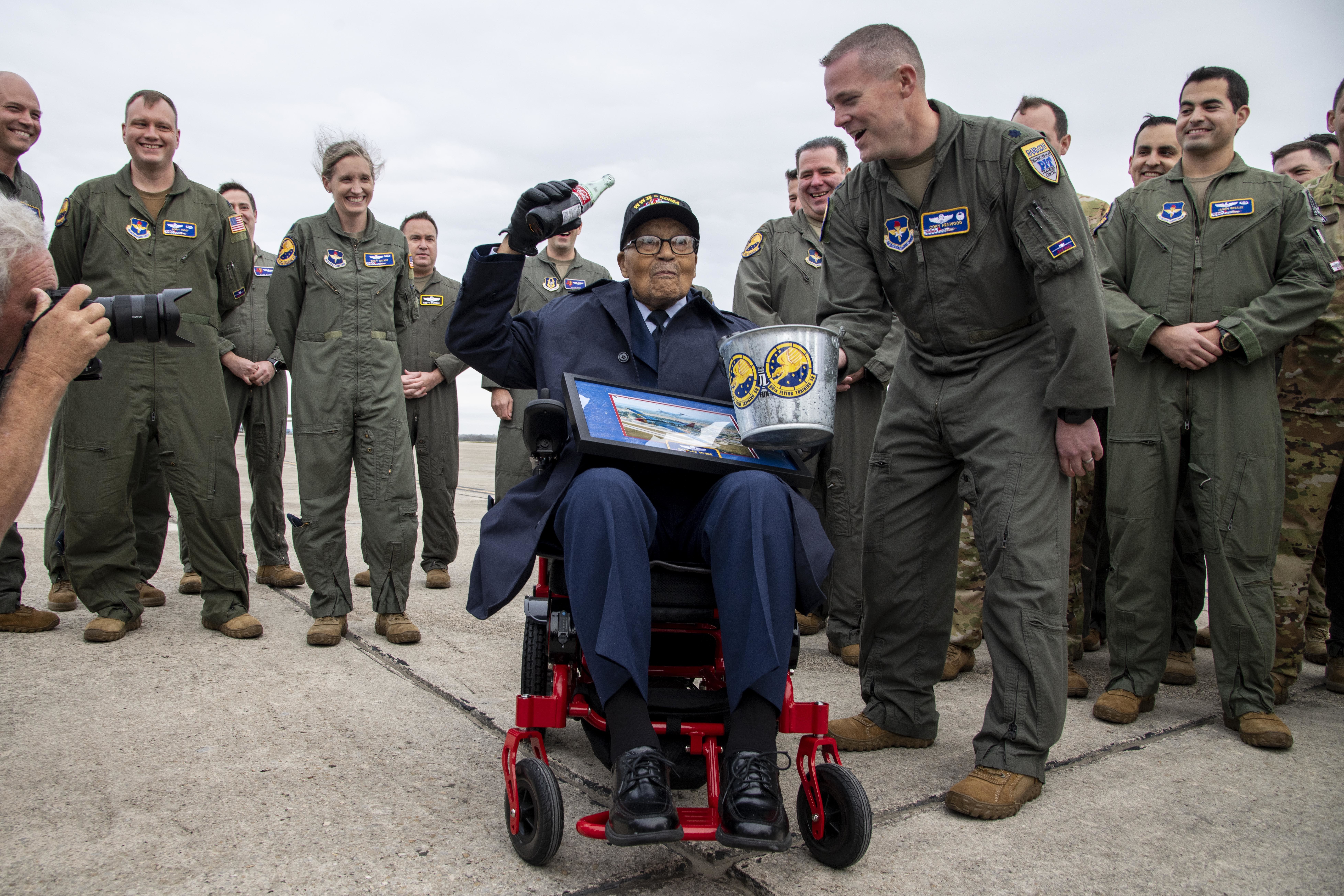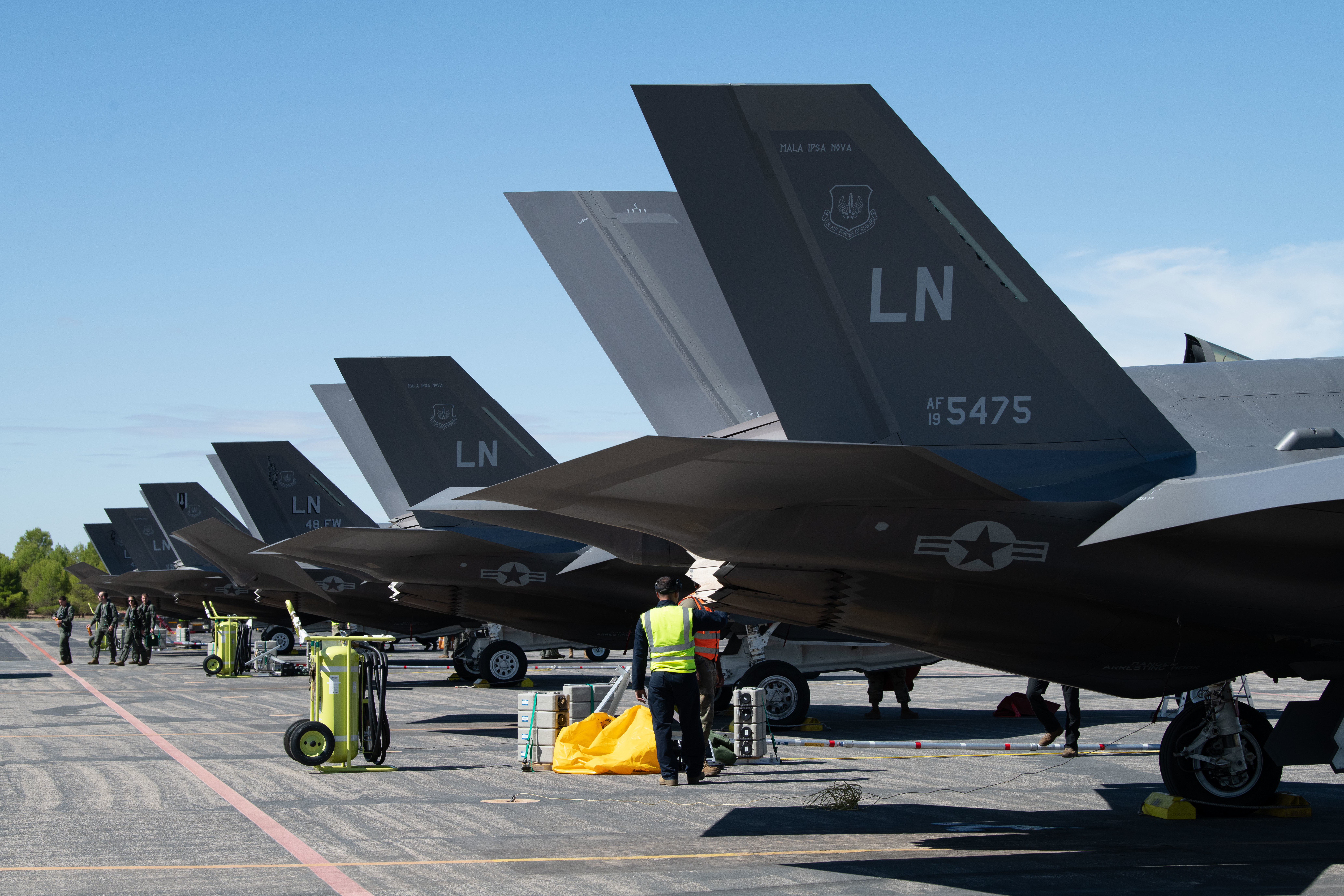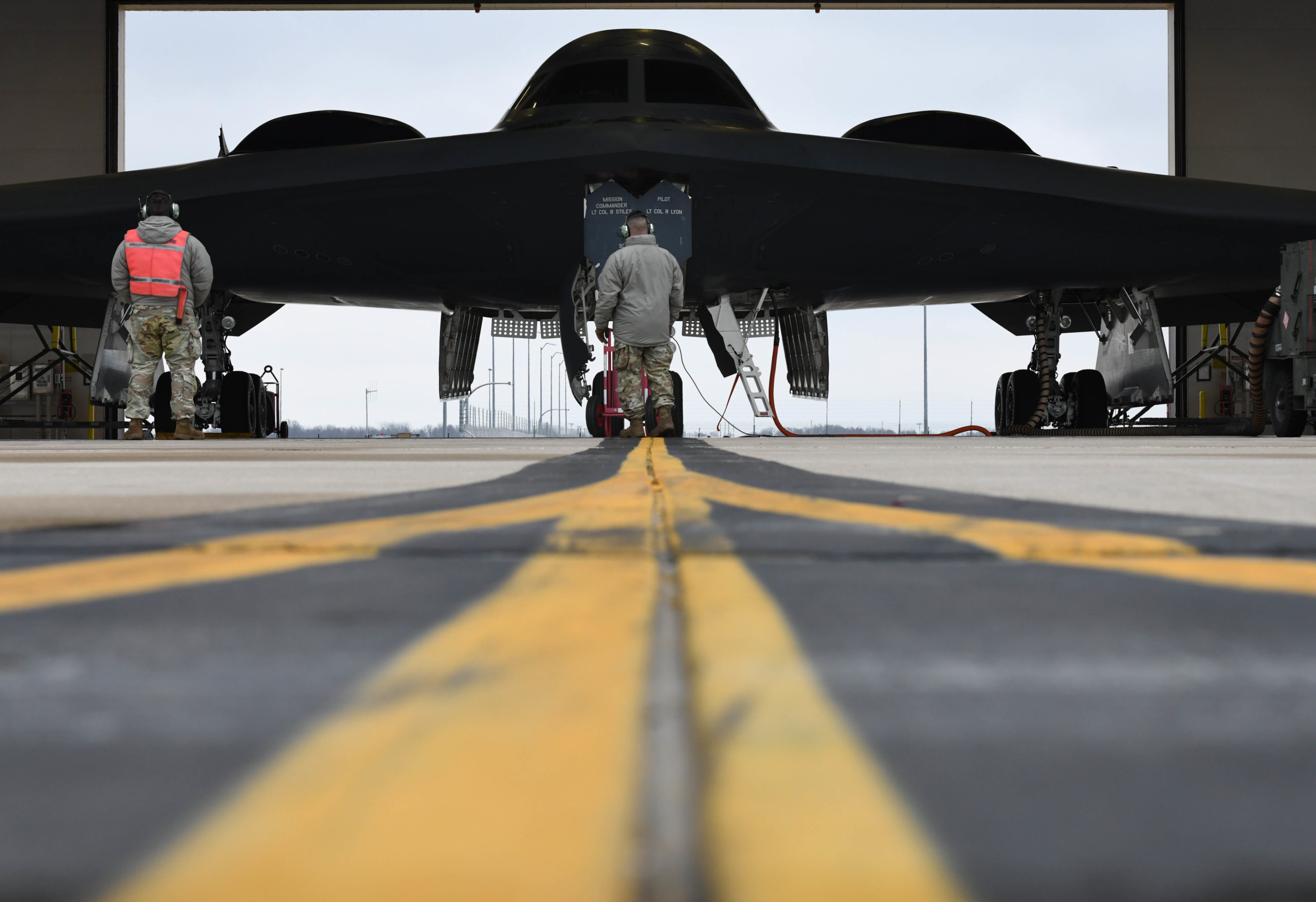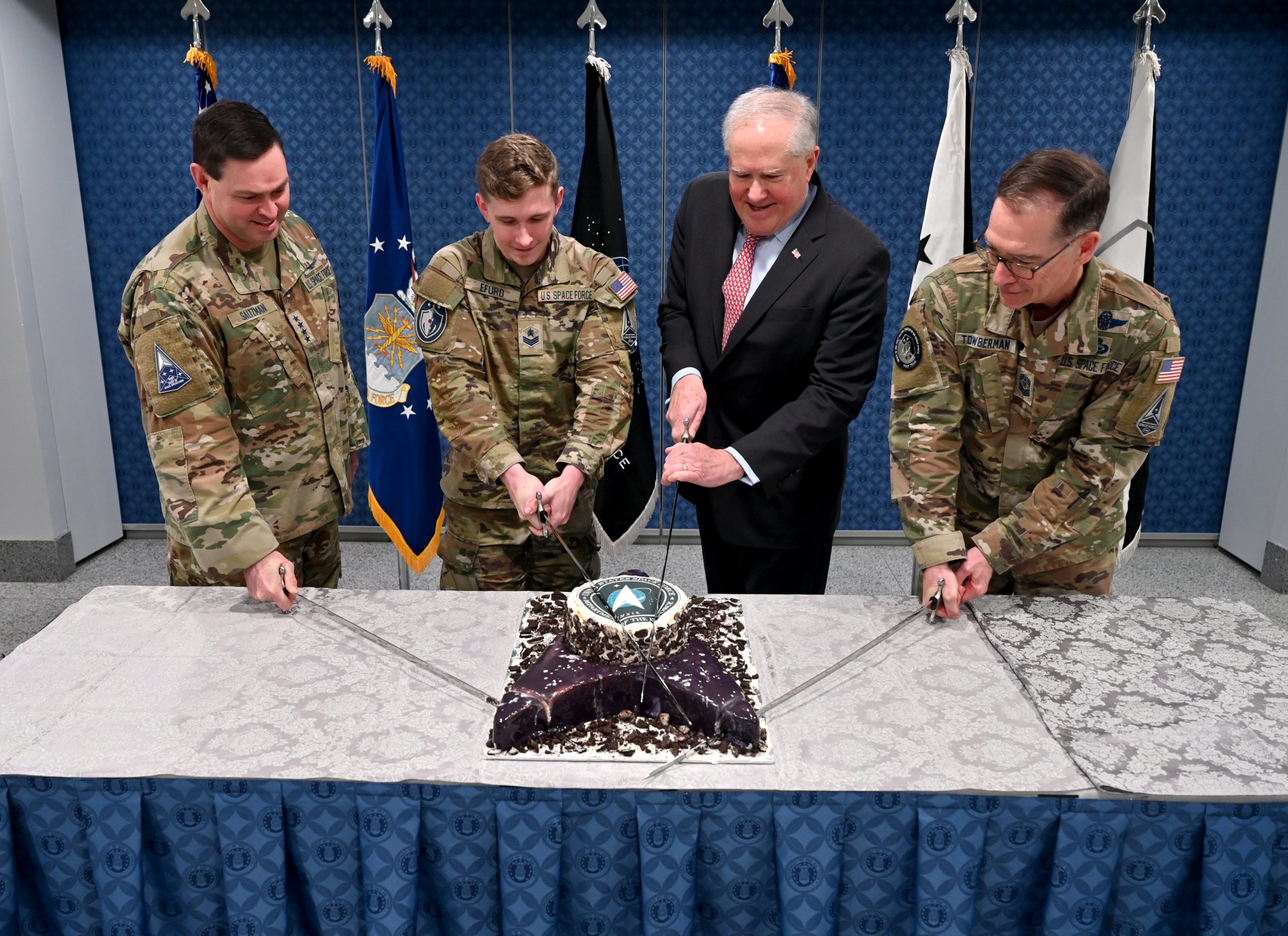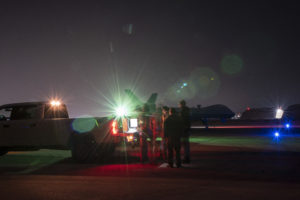
361st Expeditionary Attack Squadron personnel use a portable computer to relaunch an MQ-9 Reaper on a flight line at an undisclosed location, Southwest Asia, Dec. 10, 2022, as part of a Forward Arming and Refueling Point operation. (U.S. Air Force photo by: Tech. Sgt. Jim Bentley)
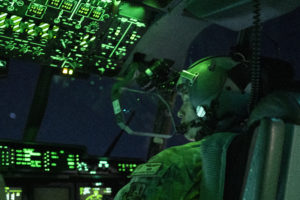
U.S. Air Force Capt. Mason Weston, 26th Expeditionary Rescue Squadron HC-130J Combat King II pilot, flies the aircraft within the U.S. Central Command area of responsibility in preparation for a forward area refueling point mission, Dec. 10, 2022. The HC-130J is a multi-capable airframe, that performs combat search and rescue, helicopter aerial refueling, combat airlift, and airdrop missions within the AOR. (U.S. Air Force photo by Tech. Sgt. Daniel Asselta)
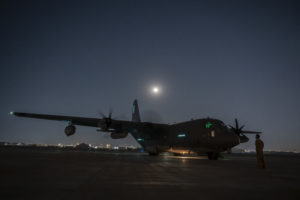
U.S. Air Force Senior Master Sgt. Ryan Conti, 26th Expeditionary Rescue Squadron HC-130J Combat King II loadmaster, performs pre-flight engine start procedures prior to a forward area refueling point mission at an undisclosed location within the U.S. Central Command area of responsibility, Dec. 10, 2022. The HC-130J is a multi-capable airframe, that performs combat search and rescue, helicopter aerial refueling, combat airlift, and airdrop missions within the AOR. (U.S. Air Force photo by Tech. Sgt. Daniel Asselta)
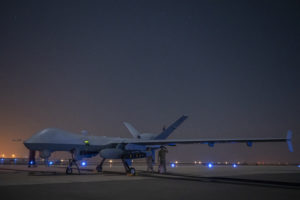
U.S. Air Force Senior Airmen Zackary Short and Keven Torres, forward area refueling point (FARP) specialists assigned to the 26th Expeditionary Rescue Squadron, provide fuel to an MQ-9 Reaper from a HC-130J Combat King II aircraft, enabling a rapid, combat turnaround and launch at an undisclosed location within the U.S. Central Command area of responsibility, Dec. 11, 2022. FARP specialists provide a unique refueling capability, extending the reach and combat effectiveness, while reducing turnaround times for a variety of aircraft in austere locations across the CENTCOM AOR. (U.S. Air Force photo by Tech. Sgt. Daniel Asselta)
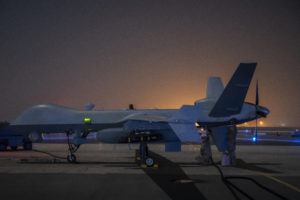
U.S. Air Force Senior Airmen Zackary Short and Keven Torres, forward area refueling point (FARP) specialists assigned to the 26th Expeditionary Rescue Squadron, provide fuel to an MQ-9 Reaper from a HC-130J Combat King II aircraft, enabling a rapid, combat turnaround and launch at an undisclosed location within the U.S. Central Command area of responsibility, Dec. 11, 2022. FARP specialists provide a unique refueling capability, extending the reach and combat effectiveness, while reducing turnaround times for a variety of aircraft in austere locations across the CENTCOM AOR. (U.S. Air Force photo by Tech. Sgt. Daniel Asselta)
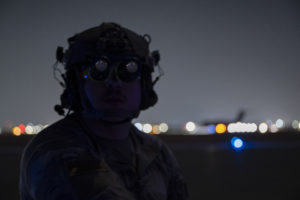
U.S. Air Force Senior Airman Keven Torres, forward area refueling point (FARP) specialist assigned to the 26th Expeditionary Rescue Squadron, prepares to provide fuel to an MQ-9 Reaper from a HC-130J Combat King II aircraft, enabling a rapid, combat turnaround and launch at an undisclosed location within the U.S. Central Command area of responsibility, Dec. 11, 2022. FARP specialists provide a unique refueling capability, extending the reach and combat effectiveness, while reducing turnaround times for a variety of aircraft in austere locations across the CENTCOM AOR. (U.S. Air Force photo by Tech. Sgt. Daniel Asselta)
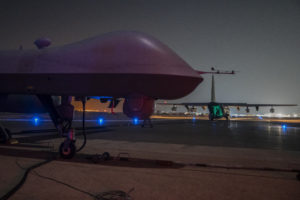
U.S. Air Force forward area refueling point (FARP) specialists assigned to the 26th Expeditionary Rescue Squadron provide fuel to an MQ-9 Reaper from a HC-130J Combat King II aircraft, enabling a rapid, combat turnaround and launch at an undisclosed location within the U.S. Central Command area of responsibility, Dec. 11, 2022. FARP specialists provide a unique refueling capability, extending the reach and combat effectiveness, while reducing turnaround times for a variety of aircraft in austere locations across the CENTCOM AOR. (U.S. Air Force photo by Tech. Sgt. Daniel Asselta)
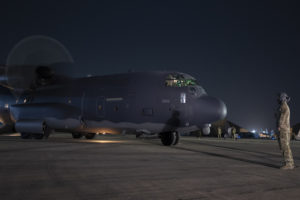
U.S. Air Force Senior Master Sgt. Ryan Conti, 26th Expeditionary Rescue Squadron HC-130J Combat King II loadmaster, performs pre-flight engine start procedures prior to a forward area refueling point mission at an undisclosed location within the U.S. Central Command area of responsibility, Dec. 10, 2022. The HC-130J is a multi-capable airframe, that performs combat search and rescue, helicopter aerial refueling, combat airlift, and airdrop missions within the AOR. (U.S. Air Force photo by Tech. Sgt. Daniel Asselta)
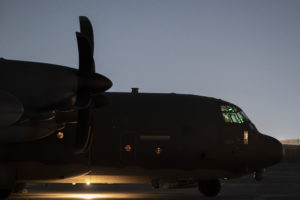
U.S. Air Force Capt. Mason Weston, 26th Expeditionary Rescue Squadron HC-130J Combat King II pilot, performs pre-flight duties at undisclosed location within the U.S. Central Command area of responsibility, Dec. 10, 2022. The HC-130J is a multi-capable airframe, that performs combat search and rescue, helicopter aerial refueling, combat airlift, and airdrop missions within the AOR. (U.S. Air Force photo by Tech. Sgt. Daniel Asselta)
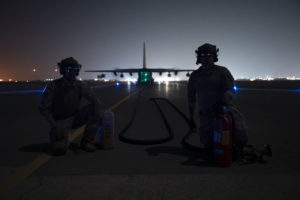
U.S. Air Force Senior Airmen Zackary Short and Keven Torres, forward area refueling point (FARP) specialists assigned to the 26th Expeditionary Rescue Squadron, prepare to provide fuel to an MQ-9 Reaper from a HC-130J Combat King II aircraft, enabling a rapid, combat turnaround and launch at an undisclosed location within the U.S. Central Command area of responsibility, Dec. 11, 2022. FARP specialists provide a unique refueling capability, extending the reach and combat effectiveness, while reducing turnaround times for a variety of aircraft in austere locations across the CENTCOM AOR. (U.S. Air Force photo by Tech. Sgt. Daniel Asselta)
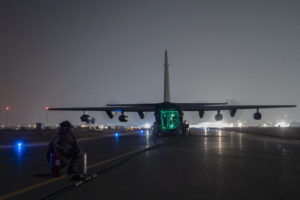
U.S. Air Force forward area refueling point (FARP) specialists and loadmasters assigned to the 26th Expeditionary Rescue Squadron provide fuel to an MQ-9 Reaper from a HC-130J Combat King II aircraft, enabling a rapid, combat turnaround and launch at an undisclosed location within the U.S. Central Command area of responsibility, Dec. 11, 2022. FARP specialists provide a unique refueling capability, extending the reach and combat effectiveness, while reducing turnaround times for a variety of aircraft in austere locations across the CENTCOM AOR. (U.S. Air Force photo by Tech. Sgt. Daniel Asselta)
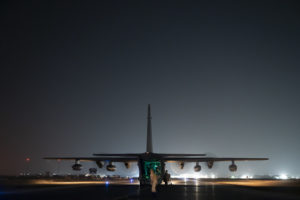
U.S. Air Force forward area refueling point (FARP) specialists and loadmasters assigned to the 26th Expeditionary Rescue Squadron provide fuel to an MQ-9 Reaper from a HC-130J Combat King II aircraft, enabling a rapid, combat turnaround and launch at an undisclosed location within the U.S. Central Command area of responsibility, Dec. 11, 2022. FARP specialists provide a unique refueling capability, extending the reach and combat effectiveness, while reducing turnaround times for a variety of aircraft in austere locations across the CENTCOM AOR. (U.S. Air Force photo by Tech. Sgt. Daniel Asselta)
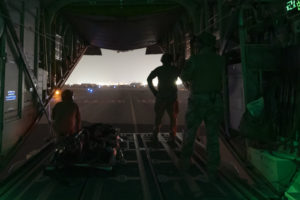
U.S. Air Force forward area refueling point (FARP) specialists assigned to the 26th Expeditionary Rescue Squadron prepare to provide fuel to an MQ-9 Reaper from a HC-130J Combat King II aircraft, enabling a rapid, combat turnaround and launch at an undisclosed location within the U.S. Central Command area of responsibility, Dec. 11, 2022. FARP specialists provide a unique refueling capability, extending the reach and combat effectiveness, while reducing turnaround times for a variety of aircraft in austere locations across the CENTCOM AOR. (U.S. Air Force photo by Tech. Sgt. Daniel Asselta)
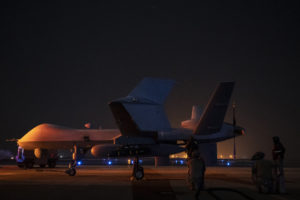
U.S. Air Force forward area refueling point (FARP) specialists assigned to the 26th Expeditionary Rescue Squadron provide fuel to an MQ-9 Reaper from a HC-130J Combat King II aircraft, enabling a rapid, combat turnaround and launch at an undisclosed location within the U.S. Central Command area of responsibility, Dec. 10, 2022. FARP specialists provide a unique refueling capability, extending the reach and combat effectiveness, while reducing turnaround times for a variety of aircraft in austere locations across the CENTCOM AOR. (U.S. Air Force photo by Tech. Sgt. Daniel Asselta)
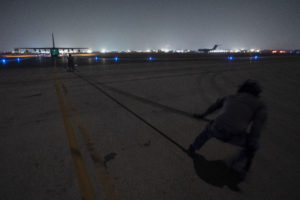
U.S. Air Force forward area refueling point (FARP) specialists and loadmasters assigned to the 26th Expeditionary Rescue Squadron provide fuel to an MQ-9 Reaper from a HC-130J Combat King II aircraft, enabling a rapid, combat turnaround and launch at an undisclosed location within the U.S. Central Command area of responsibility, Dec. 11, 2022. FARP specialists provide a unique refueling capability, extending the reach and combat effectiveness, while reducing turnaround times for a variety of aircraft in austere locations across the CENTCOM AOR. (U.S. Air Force photo by Tech. Sgt. Daniel Asselta)
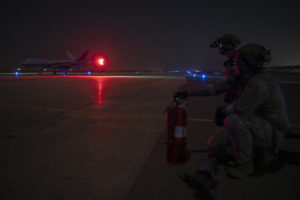
U.S. Air Force Senior Airmen Zackary Short and Keven Torres, forward area refueling point (FARP) specialists assigned to the 26th Expeditionary Rescue Squadron, prepare to provide fuel to an MQ-9 Reaper from a HC-130J Combat King II aircraft, enabling a rapid, combat turnaround and launch at an undisclosed location within the U.S. Central Command area of responsibility, Dec. 11, 2022. FARP specialists provide a unique refueling capability, extending the reach and combat effectiveness, while reducing turnaround times for a variety of aircraft in austere locations across the CENTCOM AOR. (U.S. Air Force photo by Tech. Sgt. Daniel Asselta)
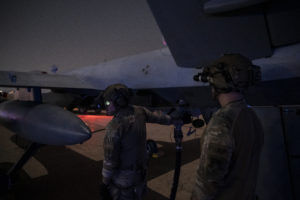
U.S. Air Force Senior Airmen Zackary Short and Keven Torres, forward area refueling point (FARP) specialists assigned to the 26th Expeditionary Rescue Squadron, provide fuel to an MQ-9 Reaper from a HC-130J Combat King II aircraft, enabling a rapid, combat turnaround and launch at an undisclosed location within the U.S. Central Command area of responsibility, Dec. 11, 2022. FARP specialists provide a unique refueling capability, extending the reach and combat effectiveness, while reducing turnaround times for a variety of aircraft in austere locations across the CENTCOM AOR. (U.S. Air Force photo by Tech. Sgt. Daniel Asselta)
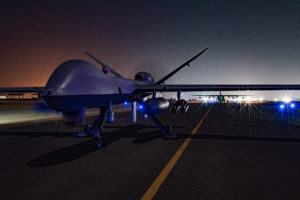
A 361st Expeditionary Attack Squadron MQ-9 Reaper and a 26th Expeditionary Rescue Squadron HC-130J Combat King II on a flight line at an undisclosed location, Southwest Asia, Dec. 10, 2022, as part of a Forward Arming and Refueling Point mission. U.S. Air Force photo by Tech. Sgt. Jim Bentley
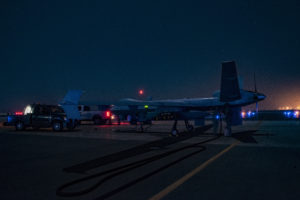
26th Expeditionary Rescue Squadron Forward Arming and Refueling Point specialists refuel a 361st Expeditionary Attack Squadron MQ-9 Reaper on a flight line at an undisclosed location, Southwest Asia, Dec. 10, 2022. (U.S. Air Force photo by: Tech. Sgt. Jim Bentley)
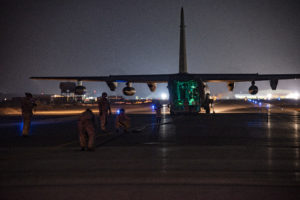
26th Expeditionary Rescue Squadron Forward Arming and Refueling Point specialists recover fuel lines on a flight line at an undisclosed location, Southwest Asia, Dec. 11, 2022, preparing to board an HC-130J Combat King II. (U.S. Air Force photo by: Tech. Sgt. Jim Bentley)
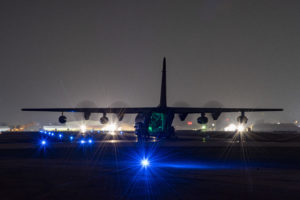
A 26th Expeditionary Rescue Squadron HC-130J Combat King II lands on a flight line at an undisclosed location, Southwest Asia, Dec. 10, 2022, as part of a Forward Arming and Refueling Point mission with an MQ-9 Reaper assigned to the 361st Expeditionary Attack Squadron. (U.S. Air Force photo by: Tech. Sgt. Jim Bentley)
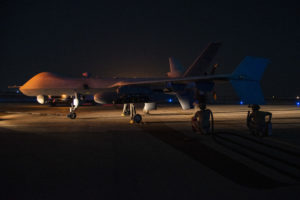
26th Expeditionary Rescue Squadron Forward Arming and Refueling Point specialists prepare to refuel a 361st Expeditionary Attack Squadron MQ-9 Reaper on a flight line at an undisclosed location, Southwest Asia, Dec. 10, 2022. (U.S. Air Force photo by: Tech. Sgt. Jim Bentley)
